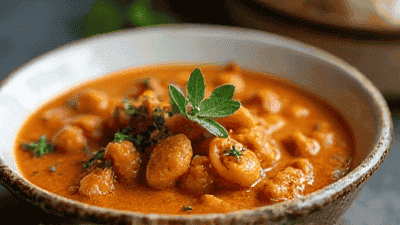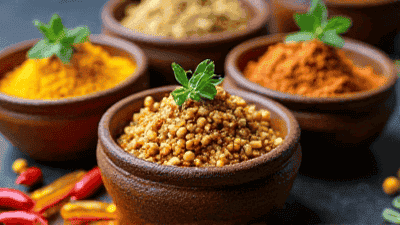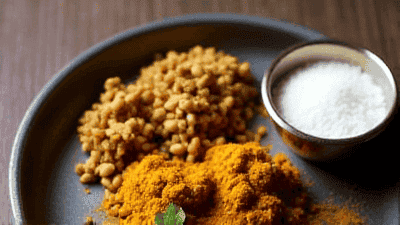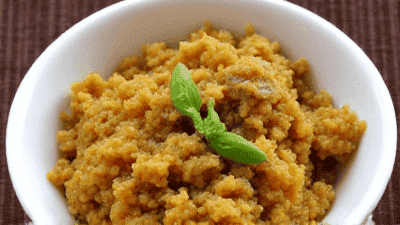
Indian cuisine is a vibrant tapestry of flavors, colors, and aromas, with curry standing out as one of its most beloved dishes. The term "curry" itself is a broad descriptor encompassing a vast variety of dishes that can range from creamy and mild to fiery hot. At the heart of every exceptional curry is a rich blend of spices, each contributing its unique character to the dish.
Curry encompasses a wide range of cooking techniques, ingredients, and styles across different regions of India. The base of most curries includes a combination of vegetables, legumes, and proteins, simmered in a spiced sauce. The foundation of a great curry often lies in the balance of flavors, bringing together the warmth of spices with the freshness of herbs, the richness of creamy ingredients, and the tanginess of tomatoes or yogurt.
While each Indian region boasts its unique curries, common threads run through them all: a harmony of spices, an emphasis on freshness, and a comforting, satisfying final dish.

Cumin is a staple spice in Indian cooking, known for its earthy and warm flavor. It can be used in seed form or ground into a powder. It forms the base for many spice blends and is often added at the beginning of cooking to enhance the flavor of the oil.
Coriander seeds have a citrusy and slightly sweet flavor. Ground coriander is commonly used in curries, while fresh coriander leaves (cilantro) are used as a garnish.
Turmeric is known for its bright yellow color and warm, earthy flavor. It has anti-inflammatory properties and is often used for its health benefits.
Garam masala is a blend of ground spices that varies by region but typically includes cinnamon, cardamom, cloves, cumin, and coriander. It adds warmth and depth to dishes and is often added towards the end of cooking.
Chili powder can vary in heat but is essential for adding spice to dishes. Kashmiri chili powder is common for its vibrant color and mild heat, while other varieties can bring significant heat.
Fenugreek has a slightly bitter and sweet flavor. Its seeds are often used in spice mixes, while fresh fenugreek leaves add a punch of flavor to dishes.
Mustard seeds add a pungent and slightly spicy flavor to curries. They are commonly used in South Indian cooking, where they are usually tempered in hot oil.
Cardamom has a floral and aromatic flavor. It’s used in both sweet and savory dishes. Green cardamom is more common in curries, while black cardamom lends a smokier flavor.
Cinnamon adds warmth and sweetness. It’s often used in curries and rice dishes, providing a comforting aroma.
Cloves have a strong, warm, and slightly sweet flavor. Used sparingly, they impart a unique taste that enhances many dishes.
When creating flavorful curries, it's essential to understand how to balance different elements. Here are some primary components to consider when building your curry:

Now that we’ve covered the foundational spices and flavor pairings, let’s explore some popular curry recipes that showcase these flavors beautifully.
Ingredients:
Instructions:
Ingredients:
Instructions:
Ingredients:
Instructions:
Use Whole Spices: Wherever possible, choose whole spices and toast them before grinding. This can significantly enhance the flavor of your dishes.
Experiment with Spice Levels: Start with small amounts of chili powder and taste as you go. Adjust heat levels to suit your preference.
Balance Flavors: Taste your curry during cooking. Adjust acidity (add lemon juice or tamarind), sweetness (add a pinch of sugar), or salt as needed to achieve balance.
Cook Low and Slow: Allowing your curry to simmer for a longer duration allows flavors to develop and meld beautifully.
Serve with Accompaniments: Pair curries with sides like basmati rice, naan, raita, or pickles to round out the meal.

While Indian curries can be indulgent, they can also be nutritious. Here are some health considerations to keep in mind:
Nutritional Value: Incorporate vegetables, legumes, and lean proteins into your curries. This adds fiber, vitamins, and minerals to your meals.
Healthy Fats: Use healthier oils such as olive or coconut oil in moderation to keep the dish balanced.
Portion Control: Be mindful of portion sizes, especially if serving alongside rice or bread.
Lowering Fat Content: Substitute heavy cream with yogurt or reduce the amount of oil used. For vegan options, consider coconut milk or nut-based cream.
Indian curries are a celebration of spices and flavors, offering endless opportunities for creativity in the kitchen. By mastering the essential spices and understanding their flavor pairings, you can craft curries that are not only delicious but also reflective of the rich culinary heritage of India.
Whether you are preparing a classic chicken curry or a vibrant chana masala, the warmth and comfort of a homemade curry is a delightful experience. Take the time to explore different spices, experiment with flavors, and share your creations with friends and family. The joy of cooking and enjoying a hearty curry will make your culinary journey all the more rewarding.
This Indian curry guide serves as a foundation for you to start your curry-making adventures. Embrace the complexity of flavors and savor the love that goes into each pot of curry.